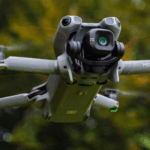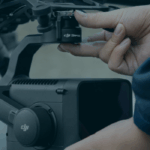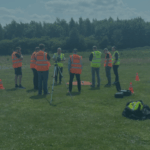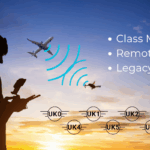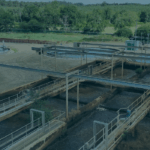In today’s asset management environment, organisations are facing unprecedented pressures. From cladding compliance and fire safety to retrofit planning and net zero targets, the need for accurate, timely building intelligence has never been greater. Many are also being asked to do more with less, as capital budgets are squeezed and the expectations around resident engagement and transparency continue to rise.
Amid these challenges, drone inspections have emerged not as a trend or a quick fix, but as a pragmatic tool for those who are ready to reimagine how they manage and monitor high-rise buildings.
From Tactical Task to Strategic Insight
Much of the conversation around drones has historically focused on cost savings and safety. While these benefits remain important, the real value lies in what drone-captured data enables across an organisation.
Drones allow teams to capture condition data across entire estates with minimal disruption. More importantly, they deliver insights that are usable across departments. Whether planning cladding removal, assessing the thermal performance of EWI, or supporting PAS 2035 workflows, drone inspections provide the kind of granular, up-to-date information that traditional methods often struggle to deliver.
This is not just about speeding up inspections. It is about unlocking a more agile, data-informed way of working.
Developing Confidence, Not Just Capability
At Iprosurv, we regularly work with housing associations, local authorities, and private asset owners. Some of these organisations are looking to build internal drone teams. Others prefer to work with trusted partners who can deliver end-to-end inspection services. Some choose a blend of both.
Whichever route they take, one thing remains clear. Technology is only useful when it is accompanied by clarity and confidence. 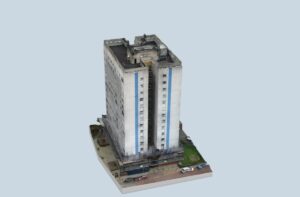
Organisations need to understand not only how drones work, but how drone data can align with existing systems and objectives. They want to know what datasets to request, how to interpret the outputs, and how these outputs can support decision-making. In many cases, the value is not in flying a drone, but in understanding what that drone can reveal.
This is why education and strategy are key. A successful drone programme, whether internal or outsourced, starts with identifying the questions you want your data to answer.
Lessons from Practice
Consider the case of a housing provider managing a portfolio of 50 high-rise buildings. Faced with mounting pressure to inspect and prioritise cladding remediation, they needed a scalable way to gather façade data. Traditional scaffold-based methods would have taken over a year and required significant capital upfront, before any remedial work could begin.
By using drone inspections supported by interactive 3D models, the provider completed the initial data capture in days. This allowed their internal teams and external contractors to access the same high-quality visual data, assign priorities, and begin design work without delay. The organisation reduced inspection time by over 90 percent and freed up capital for actual interventions, not just diagnostics.
Just as importantly, the teams involved developed new ways of collaborating across digital platforms. This was not just a technology project. It was an operational shift.
Creating a Pathway for Adoption
For organisations new to drone technology, the barrier is rarely cost or policy. More often, it is simply knowing where to start.
You do not need to become a drone specialist to benefit from aerial inspections. Nor do you need to commit to a large-scale programme before understanding how the outputs will be used. In fact, many of the most successful programmes begin with a single use case or pilot project.
Whether you are looking to enhance your FRAEW register, plan external retrofit works, or understand how to link inspection data into your asset systems, drones can support the process. What matters most is choosing a path that suits your organisational needs and structures.
This might mean bringing drone pilots in-house and investing in training. It might mean building a partnership model with external specialists. It might mean combining both, based on geography or project type. What matters is that the approach is intentional and focused on outcomes, not just activity.
A Tool for the Sector, Not Just the Project
As the landscape continues to evolve, with growing emphasis on digital compliance, ESG reporting, and resident transparency, drone inspections offer more than just imagery. They offer clarity, flexibility, and shared understanding.
The organisations that thrive in this new environment will be those that can see clearly. Drone inspections help build that visibility. But they also help build organisational confidence. That is what we aim to support at Iprosurv.
If you are exploring how drones might fit into your strategy, we are happy to share what we know. Whether you need training, guidance, or simply a conversation, our role is not to sell, but to support.
Let’s explore the possibilities, together.


